Counterclockwise: the story of Galaxy S phones, part 2

Last time we chronicled the rise of Samsung's Galaxy S phones and we reached a critical point in its story - the first disappointing phone in the series.
What happened is that Samsung designed the Galaxy S5 in a spreadsheet. It had great features (even if some weren't perfectly executed), but the result was a bland-faced powerhouse.
Chief rival Apple has found success in talking about the design and user experience, leaving the phone's features as something of a black box - it works with Apple magic. It was time Samsung tried to do the same.
Alpha is the beginning
Before the S phones can redeem themselves, we need to take a detour. The Galaxy Alpha was Samsung's take on the iPhone, it even matched the screen size at 4.7". This was also the company's first smartphone to be built around a metal frame. The phone earned praise for its design and premium build quality.
The focus on design over features was clear, but Samsung was clever about it. The 6.7mm phone had a small battery (just 1,860mAh) and yet it had solid battery life thanks to the first 20nm chipset.
People complained about the lack of features, even about Samsung's decision to drop the microUSB 3.0 port - you know, the one that others complained about. The company had taught its audience that features are king and a course correction was in order.
Over-correction
The Alpha was a trial run, the Galaxy S6 was the phone that Samsung really wanted to build. It was a much more advanced phone, though it applied the lesson learned - looks matter. The S6 used a metal frame again, but switched the plastic back to glass for a "jewel-like" appearance.
The microUSB 3.0 did not make a comeback, instead Samsung bet on the more elegant wireless charging (that said, we wouldn't have minded USB-C). The other big focus was the screen (now with QHD resolution) and the camera, which was a more prominent hump due to the thinner body.
As for the screen, Samsung incorporated the curved screen of the Note Edge into a new class of phone - the Galaxy S6 edge. The curved sides of the screen made it one of a kind.


Samsung Galaxy Alpha • Samsung Galaxy S6 edge
Things didn't work out perfectly, though, Samsung cut too far. Removing the waterproofing, the microSD slot and sealing the battery caused an outcry from long-time fans. Still, sales were strong - not Galaxy S4 strong, but definitely stronger than the S5.
It wasn't perfect, but the Galaxy S6 hit the mark. It got raving reviews for its design and build, for its screen and camera. It even avoided the Snapdragon 810 trap that its contemporaries suffered from.
For one reason or another, Europe never got a proper Galaxy Note5 launch. As a consolation prize, Samsung created the Galaxy S6 edge+. It was based on the S6 edge, but offered a larger screen (5.7" vs. 5.1"), more RAM and a bigger battery. It wasn't quite a Note replacement, but this recipe worked out well enough that for next year, the company dropped the small edge model.
Tick-tock
Samsung has adopted a cadence of revolution-refinement or what Intel calls "tick-tock". One generation brings sweeping design changes, the next generation fixes the things that didn't quite work out.
The Galaxy S7 brought back waterproofing and even improved it - S5's unsightly flap over the USB port was gone. The battery was still sealed, but designers made the phone thicker for higher capacity. The microSD slot was brought back too.
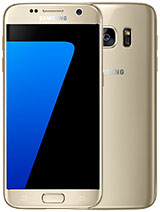
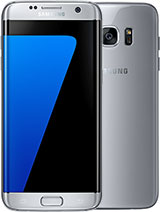
Samsung Galaxy S7 • Samsung Galaxy S7 edge
The Galaxy S7 edge was a successor to both the S6 edge and the S6 edge+. It codified the two-tier design of S-phones with a small and large version (which would later go back to the plus naming, but without the edge).
The S7 generation wasn't a revolutionary improvement over the S6 and people noticed. Still, it fixed the major pain points of its predecessor and went to to achieve higher sales.
From here to infinity
Samsung is the largest producer of AMOLED screens and they have been the jewel of the S-series since the beginning. In fact, the company makes many of the components used in its flagships - perhaps that's what led it to focus on features so much. It could make advanced components in-house while others had to rely on separate component makers. That makes it easy to miss the forest for the trees.
When it came time to build the Galaxy S8 and S8+, the company decided to go all-in on curved screens (well, there was the Note we don't talk about). Plus, this time it would be 18.5:9 screens with great screen to body ratio.
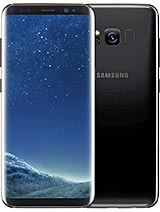
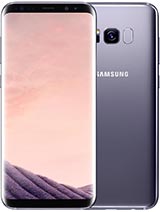
Samsung Galaxy S8 • Samsung Galaxy S8+
Samsung concocted a massive marketing campaign touting the new tall aspect ratio Infinity displays. They proved an instant hit and the S8 duo broke pre-order records in its home country. Better still, the design of the S8 was once again praised - it was "refined and polished".
After the initial fervor, sales cooled off a bit, but the Galaxy S8 phones were still appreciated for not taking away features like the headphone jack, even after making the jump to USB-C.
Some things didn't quite work out - Bixby caught a lot of flack, the iris scanning proved an security measure not for everyone. The placement of the fingerprint reader was less than ideal, to say the least.
Divergent
This brings us to today - the S9 generation, another year for refinement. In fact, the Galaxy S9 has been criticized for being very similar to the S8.
That's not entirely the case, the improvement to the camera are tangible, starting with the f/1.5 - f/2.4 variable aperture. The new video modes didn't go unnoticed either, 2160p @ 60fps and 960fps slow-mo.
Plus, Samsung repositioned the fingerprint reader and added stereo speakers. These improvements are nothing to sniff at.

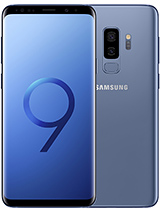
Samsung Galaxy S9 • Samsung Galaxy S9+
Still, it's really the Galaxy S9+ that is the true star. It has exclusivity on the dual camera in the S family, making it closer to the Note8. It's not hard to imagine that in the future, there will be three premium Samsung lines - Galaxy S, Plus and Note.
But that's for next year - remember, the tick-tock calendar says it's time for another major redesign.
Related
Reader comments
- AnonD-731363
- 27 Aug 2018
- SH3
Well maybe but video showed almost nothing the Note 9 were like complete. It wasnt like for example Vertu where each piece is handmade and handcrafted from the first screw up to the last by a single person.
- S6 User
- 26 Aug 2018
- nFX
Yes, looking at their factory in Gumi, South Korea, most of the work seems to be done by machines: https://m.gsmarena.com/the_birth_of_a_galaxy_note9_behind_the_scenes_video_from_samsungs_factory-news-32910.php
- AnonD-731363
- 22 Aug 2018
- SH3
Well i found some post regarding that Foxconn is making some other phones apart from apple like Xiaomi, Sony Motorola etc. But thats it.
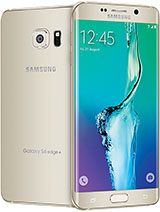
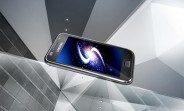







 Huawei
Huawei Huawei
Huawei Samsung
Samsung Huawei
Huawei Xiaomi
Xiaomi


